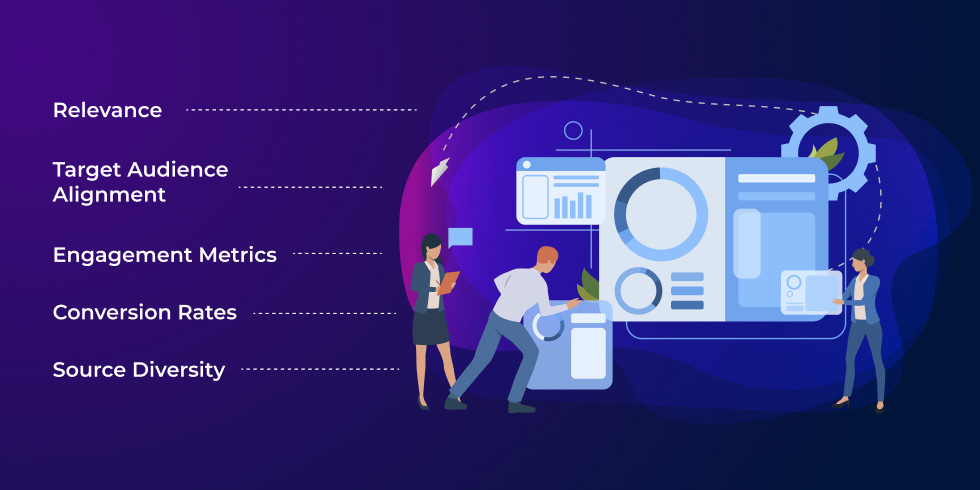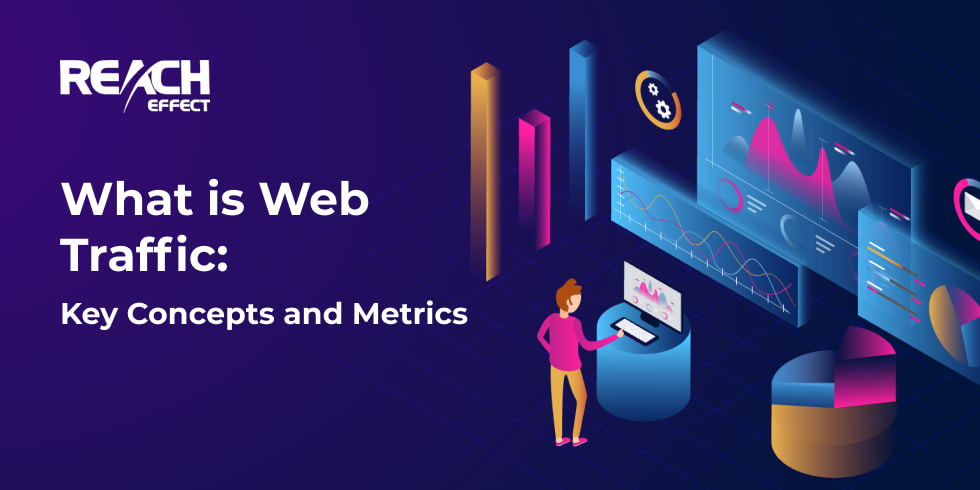Comprehending the fundamental concepts and metrics associated with web traffic is essential. Also, it is vital for businesses seeking to navigate the intricacies of the online realm effectively. This guide dives into the heart of the matter, unraveling the question – what is web traffic? Join us as we dissect vital concepts and metrics. We shed light on the crucial elements that define and drive the dynamic flow of visitors across the vast expanse of the internet.
What is Web Traffic?
Web traffic encompasses the virtual highways connecting users to online destinations. It reflects the volume of visitors and interactions on a website. Understanding the nuances of web traffic involves several factors. Among them are delving into its multifaceted nature and exploring the sources, types, and metrics. They shape users’ digital journey across the vast expanse of the internet. This section unravels the core components of web traffic definition and its significance in the online area. Among them are:
- Sources of Web Traffic:
- Direct Traffic: Users who directly type a website’s URL.
- Organic Search: Visitors from search engine results.
- Referral Traffic: Users are always redirected from other websites.
- Social Media: Traffic originating from social platforms.
- Pageviews and Unique Visitors:
- Pageviews: The total number of pages viewed on a website.
- Unique Visitors: The number of distinct individuals visiting a site within a specified time frame.
- Bounce Rate:
- The percentage of visitors who navigate away from a site after viewing only one page indicates a lack of engagement.
- Session Duration:
- The average time users spend on a website during a single visit reflects user engagement.
These fundamental concepts empower users to analyze, optimize, and plan. It is vital for effective web traffic management.
What is Good Web Traffic?

In online presence, not all web traffic is equal. Quality ones have several key attributes. Collectively, they contribute to the success and effectiveness of a website. Here are the elements that define what is good web traffic:
- Relevance: Good web traffic comprises visitors interested in the web page’s content or services. They help to ensure a higher likelihood of engagement and conversions.
- Target Audience Alignment: Traffic is valuable when it aligns with the target audience defined by the website’s goals. Also, it may include demographics and user personas, maximizing the impact of the content.
- Engagement Metrics: Spent on the site, pages viewed per visit, and low bounce rates say active user engagement. They reflect the quality of the web traffic.
- Conversion Rates: High-quality web traffic is more likely to convert into desired actions. Whether buying, signing up for a newsletter, or completing a form. Demonstrate the site’s effectiveness in achieving its objectives.
- Source Diversity: A healthy mix of traffic from various sources. They include organic search, social media, referrals, and direct visits. They signify a well-rounded and sustainable web traffic strategy.
Understanding and optimizing these aspects of good web traffic is essential for websites. It aims to drive numbers and create meaningful and impactful online interactions.
Conclusion
We’ve delved into the question: What is web traffic? We’ve identified the vital elements that distinguish good web traffic. Remember that quality, relevance, and engagement are paramount. Consider depositing with our platform and actively engaging with Reacheffect traffic. It will help you to supercharge your web traffic strategy. Seize the opportunity to drive targeted and impactful traffic. Propel your online presence to new heights. Your journey toward online success starts with a strategic deposit and the dynamic capabilities of our traffic.
[insert-buttons] [/insert-buttons]










